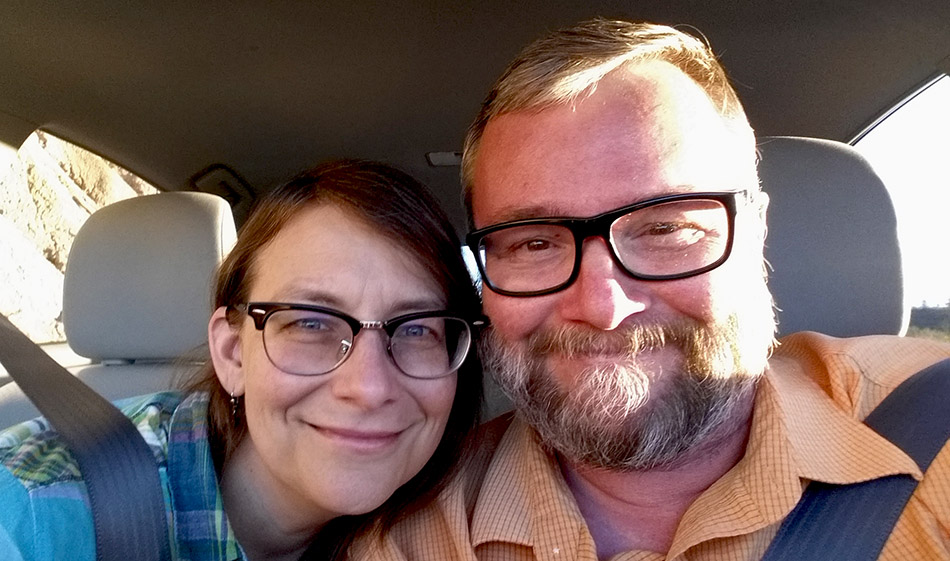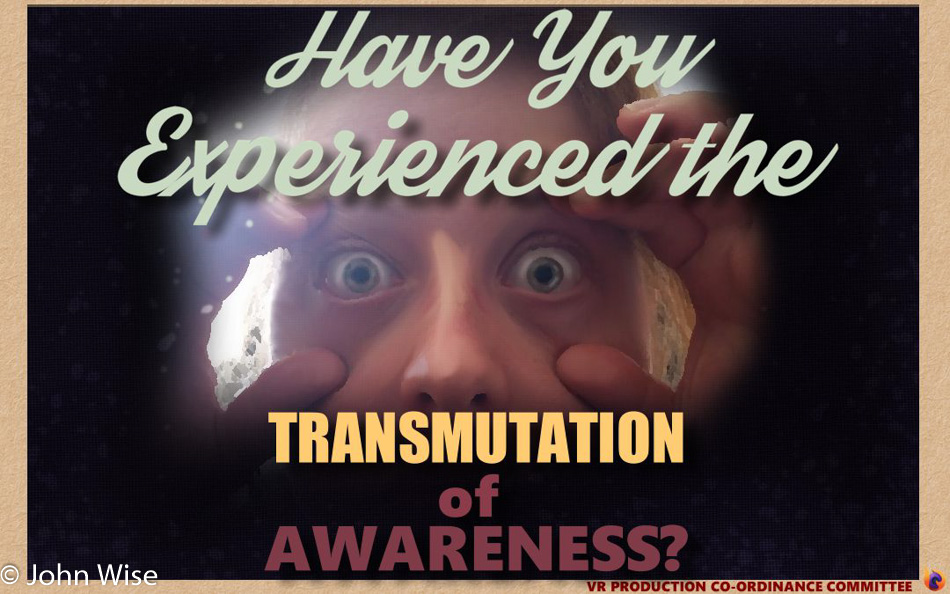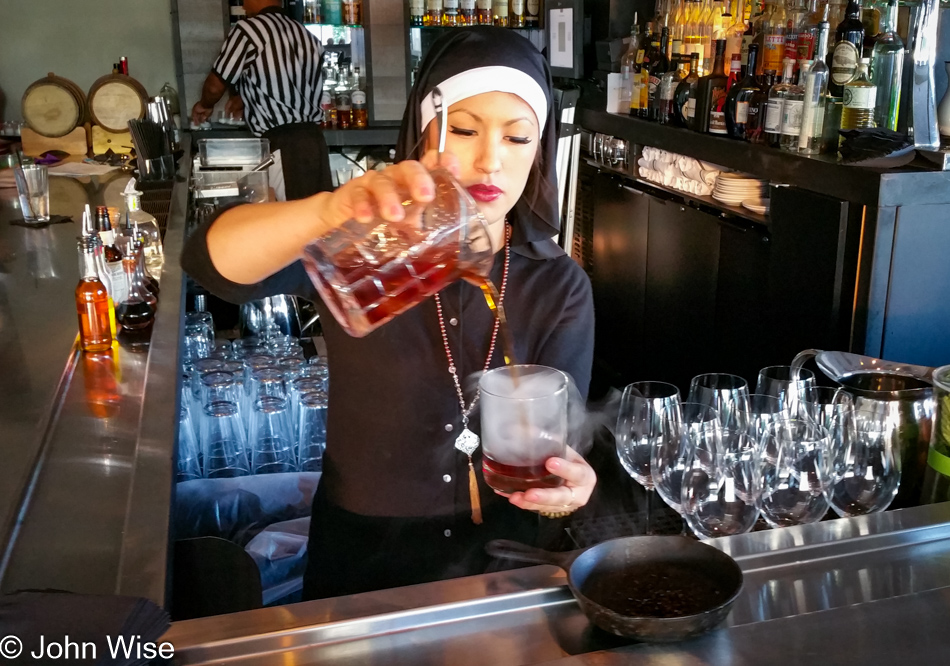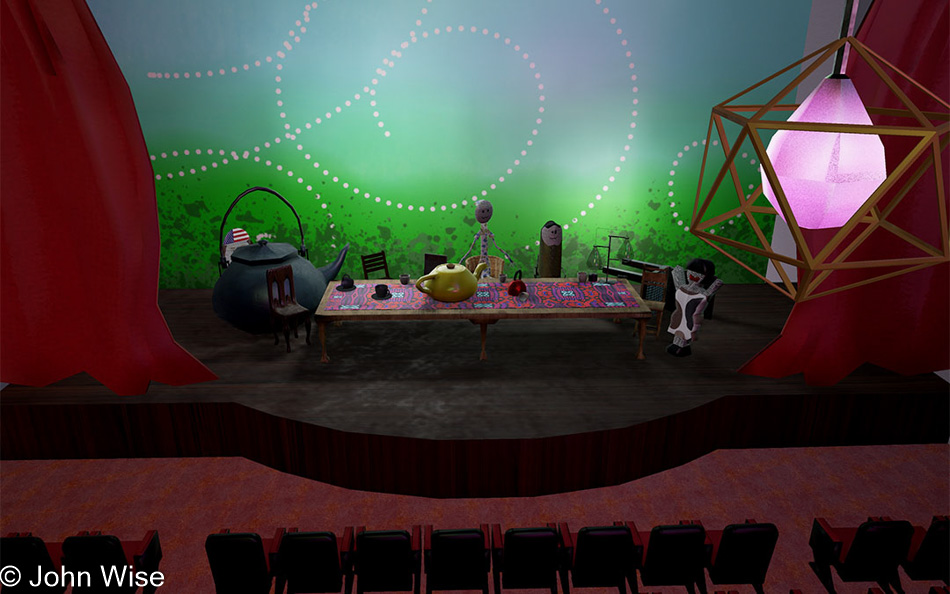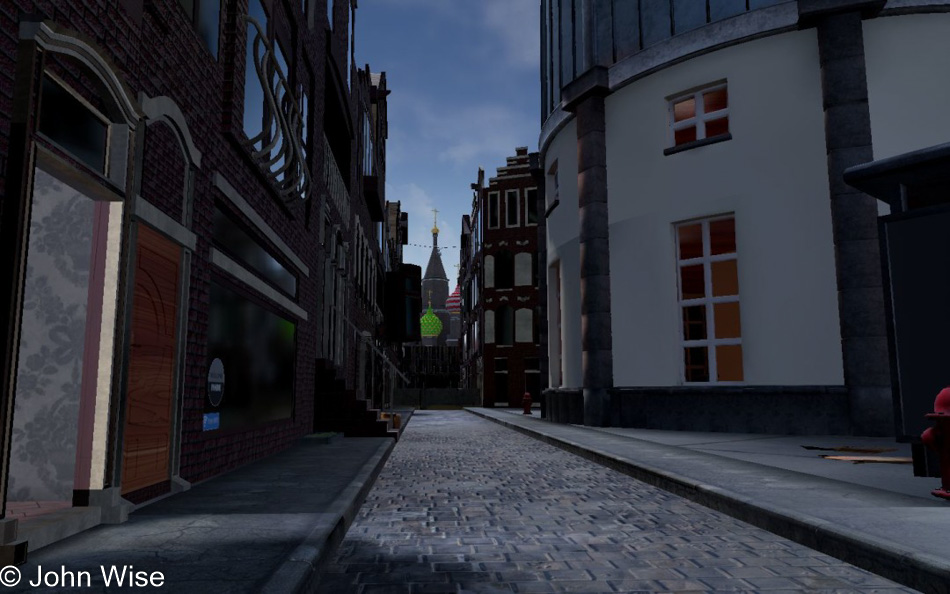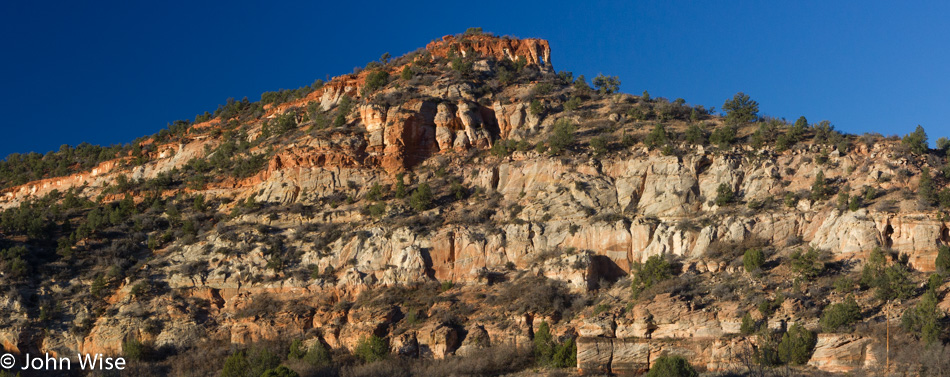
Red rock, sandstone, and short scrub in an arid environment mean we are still in the desert, but that doesn’t mean we love the landscape any less. We live out west and have gazed upon scenes like this countless times, and still, we appreciate it as though it was the first time.
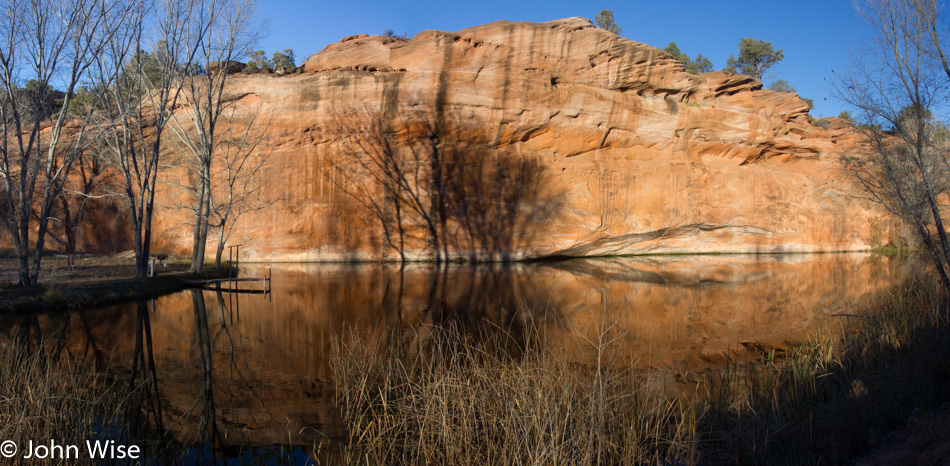
I don’t believe we’ve ever been through here in summer; matter of fact, I think it has almost always been winter as opposed to fall or spring. Why come through this way during the winter months? Quiet and serenity, just like this pond next to the road.
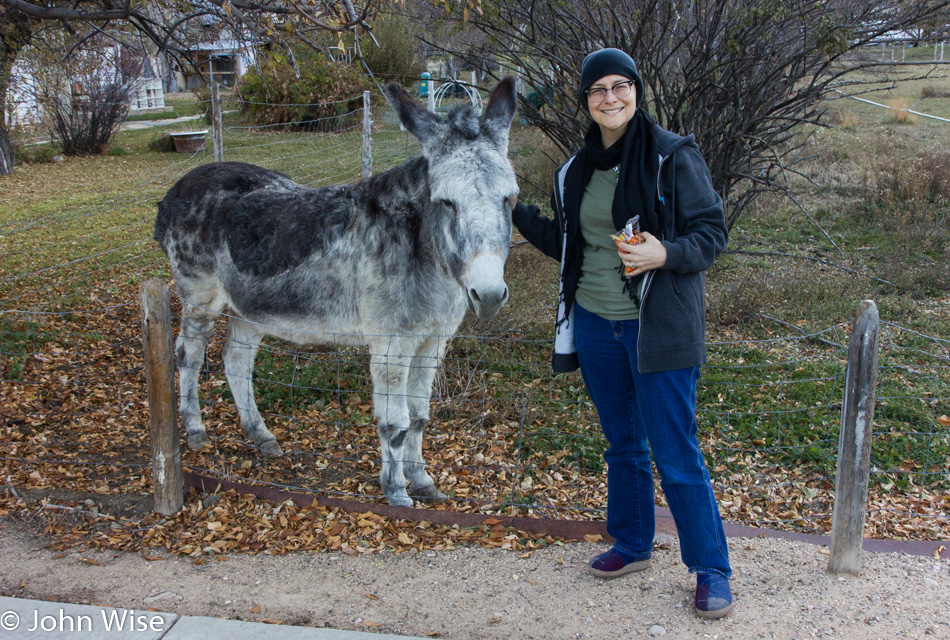
We’ve lost count of how many times we have stopped here in Glendale, Utah, to say hi to this now-old donkey named Maisy. My guess is that we first met her about 20 years ago. By now, we’ve also met her owners, Cloyd and Sherri Brinkerhoff, and when the day comes that this super sweet donkey is no longer in this field, we’ll be truly sad that our visits with her are over. She’s never failed to come over to the fence and bray, which on occasion has made other wanna-be visitors get back in their car and promptly leave.
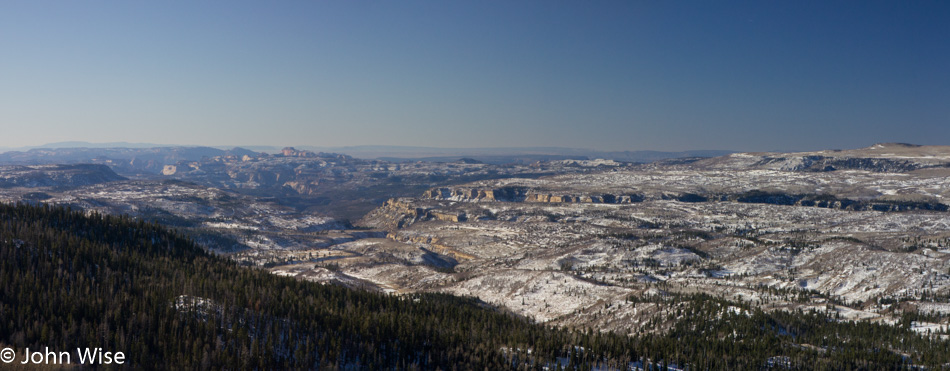
While I pointed out that we typically visit in winter, I didn’t let you know that it can be cold out here; really cold.
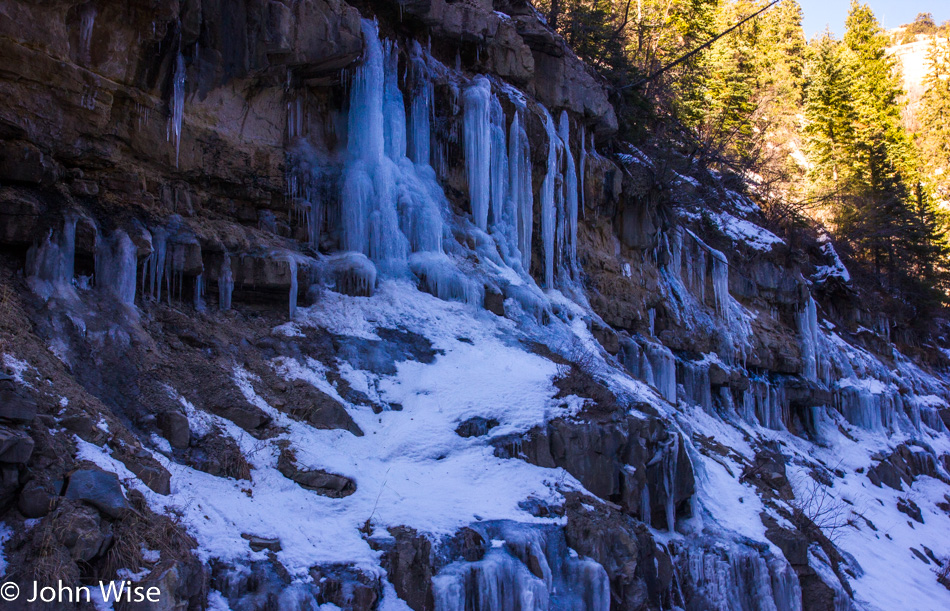
Yep, that cold!
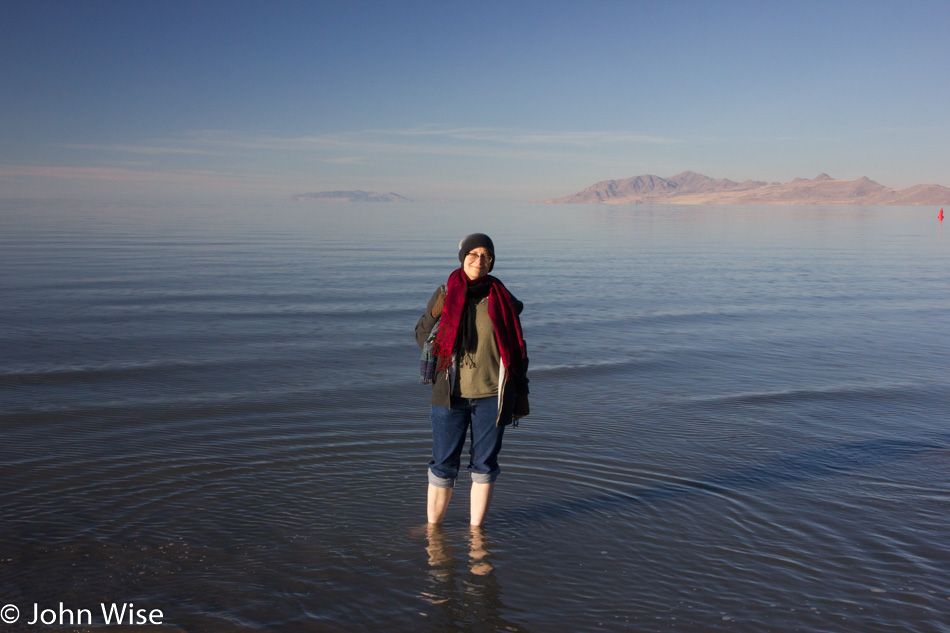
Cold, though doesn’t stop Caroline from her first steps into the southern end of the Great Salt Lake. I point out the southern end because there’s a chance she stepped into these salty waters on a previous trip when we visited Antelope Island further north. The weather has obviously been beautiful while we’ve been out on this leg of our road trip, but then again, no matter the weather we always find a silver lining to whatever nature delivers.
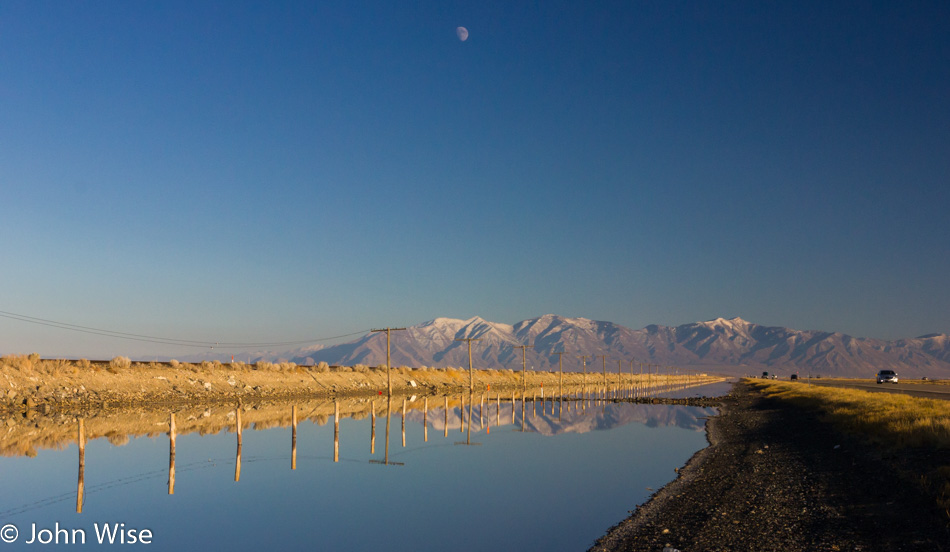
Struck by immense beauty, we are forced to pull over and gawk at the reflections and snowcapped peaks.
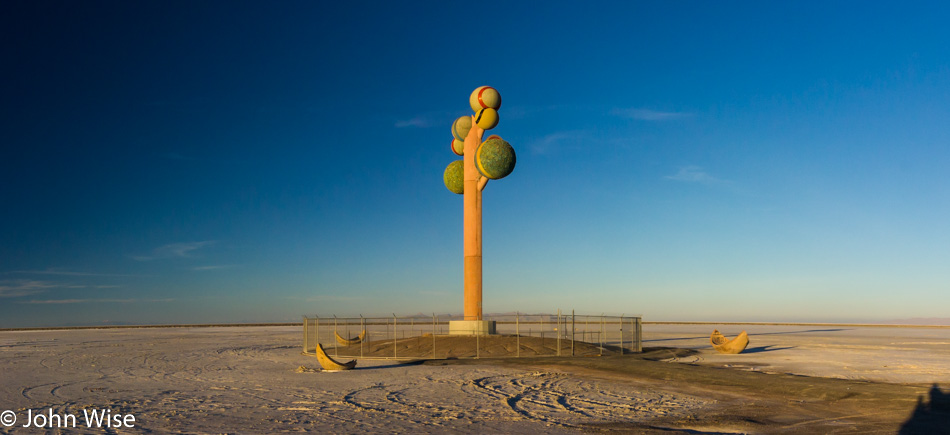
This is Metaphor: Tree of Utah out in the middle of nowhere “growing” in the Bonneville Salt Flats between Aragonite, Utah, and West Wendover, Nevada, off Interstate 80. This sculpture was created by Swedish artist Karl Momen in the 1980s.
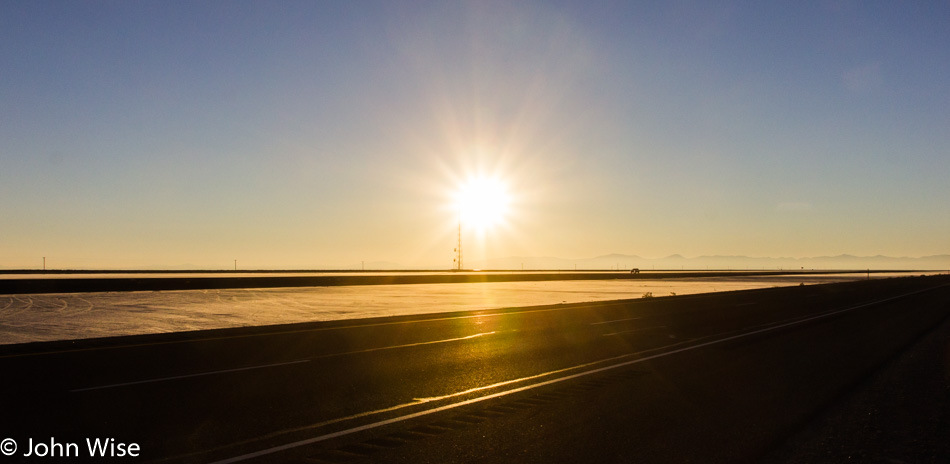
The Bonneville Salt Flats stretch for miles across a flat, desolate landscape that is spectacular in its asceticism.
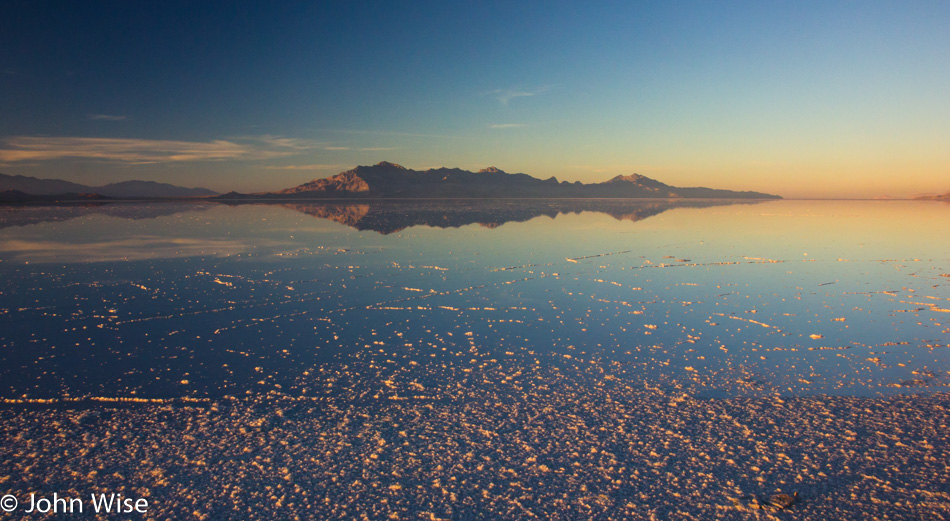
Not a blade of grass, bush, tree, or sign of wildlife was met out here. The salty brine of the pooling water on the salt flat appears to sterilize the environment, although it also seems to welcome the reflection of a kind of beauty not found near other bodies of water.
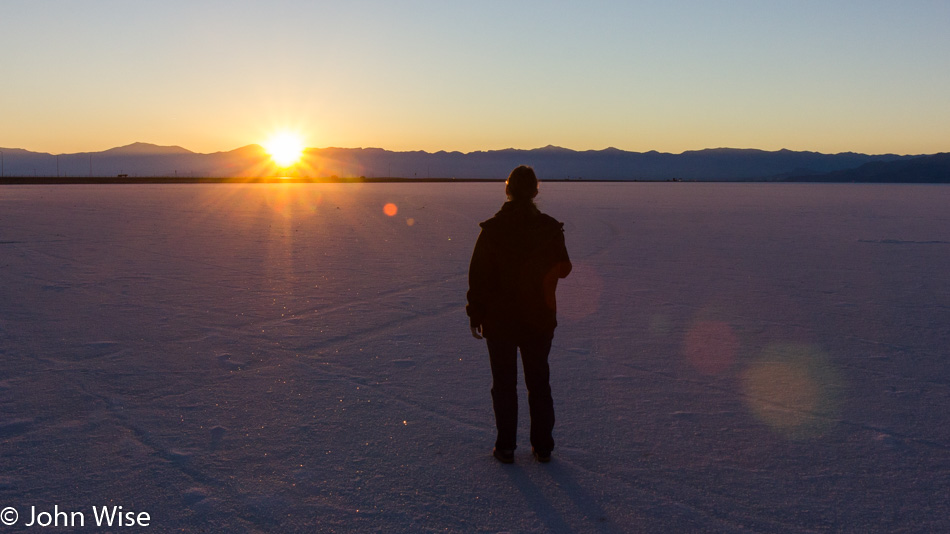
While our drives can be lengthy, this one was 503 miles and took all day into the evening; we never forget to stop and gaze at the sights that feel so uncommon to our wandering eyes. Orange and lavender light lifts off the glistening salt, all the while looking like fresh snow as the sun sets once more on this former lake. Fifteen thousand years ago, during the last ice age, the lake that stood here covered nearly a third of Utah and was about the size of Lake Michigan. Now, with the lake evaporated, a salt bed that is nearly five feet thick in places is all that remains.
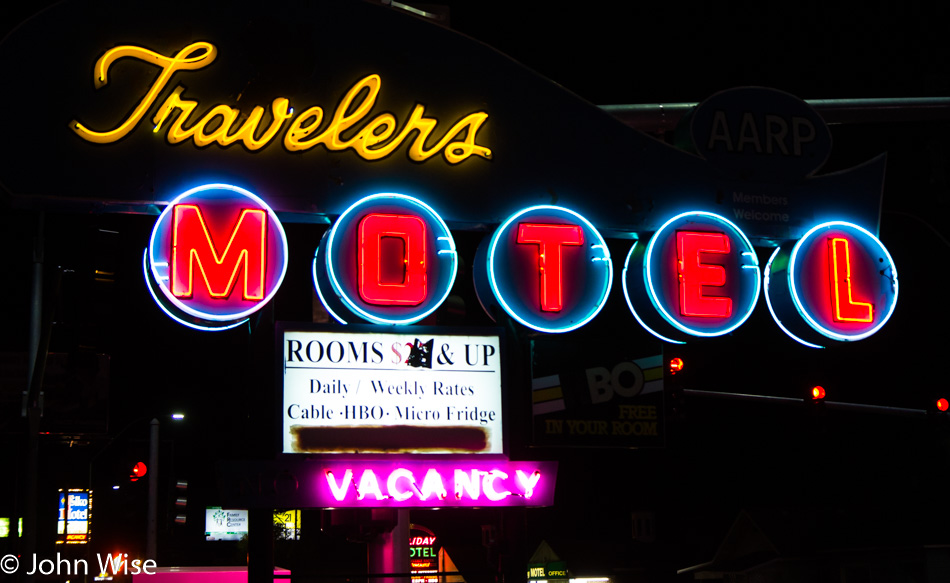
You are looking at a large part of the criteria on how we choose motels when we are traveling. Pay attention; I did not say hotel. For those who don’t know the difference, in a hotel, you enter from an interior door, while a motel room, is entered from an exterior door. Consequently, motels are cheaper as they are probably deemed not as safe from those who veer a bit far into paranoia. But it is not the door that helps us choose a place to spend an overnight visit; it is the sign. Caroline has a soft spot for nostalgic neon signs reminiscent of the golden age of travel in the 1960s, so the cheaper the room and more colorful the sign, the greater the chance that we’ll be checking in for the night. Tonight’s stay here at the Travelers Motel is in Elko, Nevada.
